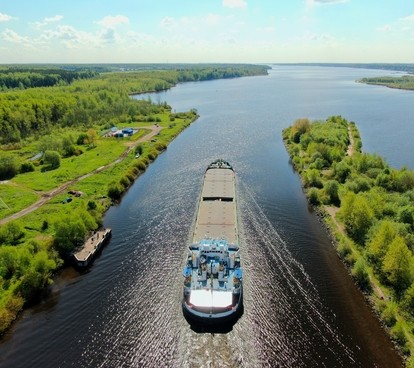Court of Appeal agrees that no binding salvage contract concluded
SMIT Salvage BV & others -v- Luster Maritime S.A. & another (Ever Given – salvage claim) [2024] EWCA Civ 260

Court of Appeal agrees that no binding salvage contract concluded
The refloating of the Ever Given has returned to the fore, as the Court of Appeal has been asked to consider the contractual relationship between the Owners of the vessel, (the Appellants) and the Salvors, (the Respondents).
As will be recalled, at first instance in the Admiralty Court, Baker J. concluded that there was no legally binding services contract between the Appellants and Respondents for refloating services. He found that instead, the Respondents were entitled to bring a claim for salvage under the terms of the International Convention on Salvage 1989 and/or at common law.
The Appellants appealed, arguing that there was a refloating contract in place which would preclude any claim for salvage remuneration by the Respondents. In a unanimous decision, the Court of Appeal dismissed the appeal.
The background facts
On 23 March 2021, while part of the morning northbound convoy in the Suez Canal, Ever Given ran aground, blocking the canal at one of its narrowest points. The Respondents assisted in re-floating the vessel and brought a claim for salvage. The Appellants argued that the parties had concluded a contract for services in respect of the re-floating, and the payment for services should be based on the terms of that contract. The Respondents argued there was no binding services contract, and that payment should be based on the criteria for fixing salvage remuneration.
A critical point about salvage remuneration is that the law applies a financial uplift to encourage the provision of salvage services. Consequently, a salvor can expect to receive more in the context of salvage renumeration than pursuant to a negotiated services agreement for the same operation.
The Admiralty Court decision
The question before the Court at first instance was whether a contract had been concluded.
A contract is a legally enforceable agreement. For there to be a contract, there must be: (a) an offer; (b) acceptance; (c) consideration, (d) the intention to create legal terms; and (e) certainty of terms.
The Court has said:
“The basic requirements of a contract are that: (i) the parties have reached an agreement, which (ii) is intended to be legally binding, (iii) is supported by consideration, and (iv) is sufficiently certain and complete to be enforceable… In general, the agreement necessary for a contract is reached either by the parties signing a document containing agreed terms or by one party making an offer which the other accepts. Acceptance may be by words or conduct.”
Critically, in examining the evidence, Baker J. stated:
“An intention to be bound cannot be found where it is not the only reasonable connotation of the parties’ exchanges and conduct, taken as a whole. Exchanges and conduct not consistent only with an intention to be bound are ambiguous, and a contract can only be found in and constructed from unambiguous communication.”
Finally, and expressed colloquially, it is insufficient for parties to “agree to agree” on the terms and conditions, the parties must “agree” on what it is that they have agreed upon. The law does not recognise in such a context, a “contract to enter into a contract.”
If it were the case that no services contract had been agreed, the question would be, did the assistance fall with the scope of salvage services?
The Court quoted from the practitioner text, Brice on Maritime Law of Salvage, 5th Ed.:
“In English law a right to salvage arises when a person, acting as a volunteer (that is without any pre-existing contractual or other duty so to act) preserves or contributes to preserving at sea any vessel, cargo, freight or other recognized object of salvage from danger.”
It is well settled law that, “…at sea…” includes tidal river or canal waters, so therefore the Suez Canal falls within the definition.
Key here is the word “volunteer”. If the Appellants and the Respondents had concluded a legally binding services contract, then the Respondents were not volunteers and could not claim a salvage reward, they could only seek payment based on the terms of the agreed contract.
The International Convention on Salvage 1989, (the Convention), to which the UK is a contracting party and consequently is part of English domestic law, reflects Brice’s definition, expanding the assistance part of the definition slightly to:
“Salvage operation means any act or activity undertaken to assist a vessel or any other property in danger in navigable waters or in any other waters whatsoever.”
With respect to danger, the Court has held that there must be danger or the apprehension of danger. In this context, it would be sufficient that the vessel would not have come free without the provided services.
In the Admiralty Court, Mr Justice Baker was satisfied that, whilst the parties had reached agreement on the remuneration terms for a contract, they were still negotiating the contract terms by which they were willing to be bound, when the vessel was refloated on 29 March 2021. The Court found, based on the foregoing, that no contract for services had been concluded, leaving the Respondents free to pursue a claim for salvage.
The Court of Appeal decision
The Appellants concentrated their appeal on three ultimatums given by Smit on the morning of 26 March 2021, the first by phone and then two by email as follows:
“As discussed we need to have an agreement with Owners by 12:00 Dutch time today. Otherwise we will have to take a firm position and stand down our operations to protect our interest.”
and
“With the world watching us and presently having our hands tied behind our backs failing the requested confirmation of either a commercial agreement or LOF we may be left with little choice [but to stand down] as relayed by Jody.”
The first verbal ultimatum is reported to be in a similar vein to the two written ultimatums.
Approximately one hour after the email containing the third ultimatum was sent, the parties agreed terms on several fronts, including remuneration. However, agreement had not been reached on several significant issues such as the scope of services to be provided, the standard of care which the Respondents would be obliged to undertake, and the payment terms.
Following agreement in respect of remuneration, the Respondents took various steps in furtherance of the efforts to refloat the vessel, including the chartering of two tugs, at considerable expense.
The Appellants argued that the conduct of the Respondents, which now was expanding their activities, and no longer issuing ultimatums, demonstrated that the Respondents were satisfied that a contract had been concluded, providing them with the security they needed to progress their work to refloat the vessel.
In response, Counsel for the Respondents highlighted the expressed preference of the Respondents for ‘no-cure no-pay’ LOF terms in early correspondence, submitting that the Respondents’ approach was consistent and highlighting that it was typical for a salvor to mobilise on speculation, prior to an agreement being concluded. Furthermore, the Respondents contended that the correspondence evidenced the terms for a detailed contract, which once agreed to, would leave nothing further to be addressed, implying that the Respondents’ intention to be bound would only be crystallised following an unambiguous acceptance of those terms.
The Respondents further submitted that correspondence between the parties in which the Appellants referenced, “ironing out the terms” of the services agreement was evidence of the Appellants’ contemplation that further terms, beyond remuneration, were yet to be agreed.
Following the Appellants’ counteroffer in respect of a refloatation bonus, it was the position of the Respondents that while agreement of remuneration was a necessary step towards the conclusion of a contract it could not be viewed, and was not intended to be, the culmination of negotiations.
The Respondents argued that the ultimatums did not bear the weight attributed to them by the Appellants, as the pressure to conclude a binding contract was on the Appellants not the Respondents.
The Court of Appeal decision
In dismissing the appeal, the Court of Appeal held (unanimously) that the Appellants had fallen considerably short of their burden to evidence that the parties’ exchanges demonstrated an unequivocal intention to enter into a binding contract. The Court was satisfied that, notwithstanding the content of the various ultimatums, the Respondents did not at any time indicate that they would be satisfied to be bound after dealing with remuneration only, it being clear that they had in mind to address several other terms as well.
The Court of Appeal accepted that, whilst there was urgency to conclude a contract, which dissipated after agreement was reached on remuneration, this in no way indicated that the Respondents considered negotiations to be complete.
Furthermore, the Court of Appeal agreed that the decision to fix additional tugs after remuneration was agreed was not made because of contractual certainty, but in response to the failure of the refloating attempt of 26 March 2021, which put the Respondents in a strong commercial position, giving them a reasonable expectation of a salvage award, if the parties did not conclude a contract.
Comment
Given the Respondents’ submission that there was no dispute as to the legal principles to be applied, the question whether a contract had been concluded depended on an evaluation of the parties’ communications, in their context, and in a changing situation. This required an exercise of judgment by the trial judge with which the Court of Appeal should not interfere unless the judge’s decision was plainly wrong or outside the bounds within which reasonable disagreement was possible. This was not the case. In the circumstances, a short, concise judgement on a review of the facts was to be expected.
In the absence of an executed contract, to determine whether a binding contract is in place, one must consider the intention and contemplation of the parties, based on their communications and conduct.
The decision (together with that of the Admiralty Court, at first instance) provides insight into the Court’s analysis of pre-contractual correspondence between parties, to determine whether a contract has been concluded.
In this case, it was clear that the Respondents did not intend to be bound once agreement had been reached in respect of remuneration but had yet to be agreed in respect of other terms. It also serves to demonstrate the complexities of, and difficulties of, negotiating a services contract for a refloating operation where time is of the essence.
It is also worth noting the Court’s finding that while linguistic qualifiers such as “subject to contract” can indicate there is no intention to be bound, there is no rule of law that the lack of such qualifying words indicates an intention to be bound, and that the Court will assess intentions based on an analysis of the substantive content of correspondence.






